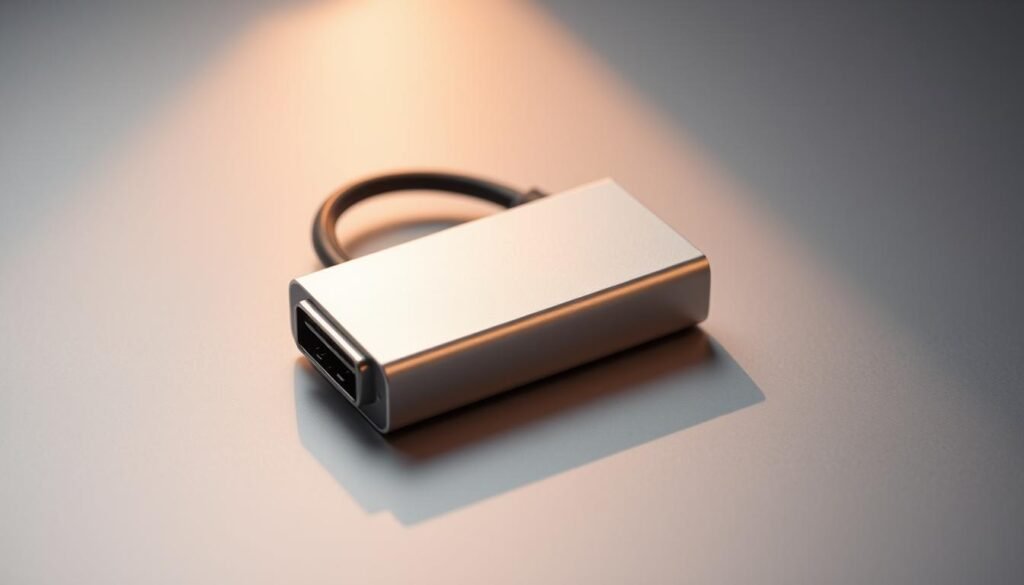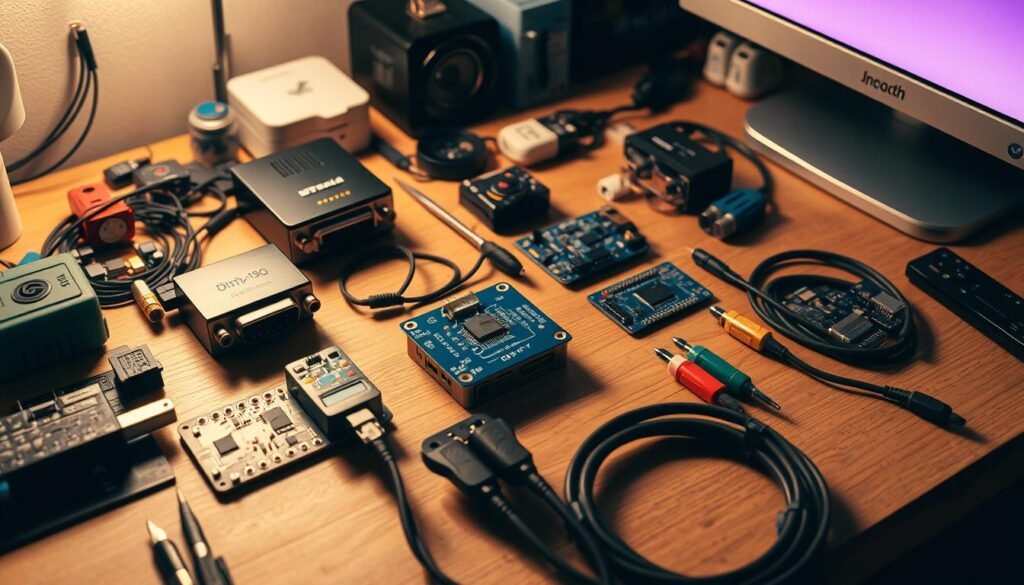Introduction
Audio adapters are essential tools for connecting different audio devices, whether linking your smartphone to a home theater system or enabling your computer to connect to high-quality headphones. While many commercial options are available, creating a custom audio adapter can be a rewarding DIY project that allows for personalization and customization to meet specific needs. This tutorial will guide you through the process of making your own audio adapter, from gathering materials to final assembly.
Materials Needed
Before you begin, gather the following materials:
- Audio connectors (e.g., 3.5mm, RCA, or XLR connectors)
- Audio cable (shielded, with appropriate gauge for audio signals)
- Soldering iron and solder
- Wire strippers
- Heat shrink tubing or electrical tape
- Multimeter (optional, for testing)
- Screwdriver (if using an enclosure)
Estimated Costs
Here’s a rough cost breakdown for the materials you’ll need:
- Audio Connectors: $2 – $10 each
- Audio Cable: $5 – $15 per meter
- Soldering Iron: $15 – $30
- Heat Shrink Tubing: $5 for a pack
- Multimeter: $10 – $20 (optional)
Step 1: Determine Your Adapter Type
Choosing the Right Connectors
Before starting your project, you need to determine the type of audio connections you want to make. Here are a few common adapter configurations:
- 3.5mm to RCA: Useful for connecting portable devices to home audio systems.
- 3.5mm to XLR: Ideal for connecting consumer audio devices to professional equipment.
- RCA to 1/4” TRS: Common in musical equipment setups.
Once you’ve chosen your configuration, gather the corresponding audio connectors.
Step 2: Cut the Audio Cable
Preparing the Cable Length
Measure the length of cable you need for your application and cut the audio cable accordingly. Be sure to allow a little extra length for handling and connecting.
Strip the Insulation
Using wire strippers, carefully strip about 1-2 inches of insulation from both ends of the cable to expose the inner wires. Be cautious not to damage the copper wires inside.
Step 3: Prepare the Connectors
Soldering the Connectors
- Tinning the Wires: Twist the exposed copper wires to prevent fraying, then apply a small amount of solder to each wire. This process, called tinning, makes it easier to attach the wires to the connectors.
- Connect the Wires: Depending on the type of connector, follow these general guidelines:
- 3.5mm Connector: Typically has three solder points (tip, ring, sleeve). Connect the left audio wire to the tip, the right audio wire to the ring, and the ground wire to the sleeve.
- RCA Connector: Generally has two solder points—one for the center pin (signal) and one for the outer ring (ground). Solder the corresponding wires accordingly.
- XLR Connector: XLR connectors usually have three pins. Connect the left audio wire to pin 2, the right audio wire to pin 3, and the ground wire to pin 1.
- Secure the Connections: Ensure the solder joints are solid and free of cold solder connections, which can cause audio issues.
Step 4: Insulate and Secure
Using Heat Shrink Tubing
Before you finalize your connections, slide a piece of heat shrink tubing over each solder joint. After securing the solder joints, apply heat to the tubing using a heat gun or lighter (carefully) to shrink it in place. This will insulate and protect the connections from shorts and damage.
Electrical Tape Option
If you don’t have heat shrink tubing, you can use electrical tape to wrap the soldered connections securely. Ensure no bare wire is exposed.
Step 5: Assemble the Adapter
Use an Enclosure (Optional)
For a professional finish, consider placing your adapter in an enclosure. This will protect the connectors and wiring. Secure the connectors in the enclosure using screws or adhesive as needed.
Final Check
Inspect the entire assembly to ensure there are no exposed wires and that all connections are secure. If you have a multimeter, use it to test the continuity of the connections, ensuring everything is wired correctly.
Step 6: Test Your Custom Adapter
Connecting Devices
Plug your newly created audio adapter into the appropriate devices. For instance, connect the 3.5mm end to your smartphone and the RCA end to your home audio system.
Conducting a Sound Test
Play audio from your source device and check for clarity and balance in sound. Make adjustments if necessary. If you notice any issues, double-check your solder joints and connections.
Tips for Success
- Quality Materials: Use high-quality connectors and cables to ensure the best audio performance.
- Practice Soldering: If you’re new to soldering, practice on scrap wires before working on your audio adapter.
- Stay Organized: Keep your workspace tidy to avoid losing small parts or tools during the project.
Common Issues and Troubleshooting Tips
1. No Sound from Adapter
If you experience no sound when using the adapter, check that all connections are secure, and verify that the source device is set to the correct output.
2. Intermittent Connection
If the audio cuts in and out, inspect the solder joints for cold solder connections or loose wires that might be causing the issue.
3. Poor Sound Quality
If you notice distortion or poor audio quality, ensure that the cable is shielded and that there are no breaks in the wire.
Advanced Customization Options
Different Configurations
You can expand your custom adapter project by exploring more complex configurations, such as creating multi-channel audio adapters for surround sound setups or adapters specifically designed for professional audio applications.
Adding Features
Consider integrating features like volume control or inline microphone capabilities into your custom adapter for added functionality.
Environmental Considerations
When selecting materials for your custom audio adapter, consider their environmental impact. Look for eco-friendly options from manufacturers that prioritize sustainability. Additionally, consider recycling old adapters and cables to reduce e-waste.
Future Projects
Related DIY Projects
Once you’ve successfully created your custom audio adapter, you might want to explore related DIY projects, such as:
- Creating custom headphone cables.
- Building a portable speaker system.
- Assembling a complete audio interface.
Conclusion
Creating a custom audio adapter can be a rewarding and practical DIY project, allowing you to tailor your audio connections to your specific needs. By following this step-by-step tutorial and incorporating the suggestions provided, you can successfully build your own adapter, enhancing your audio experience in the process. Whether for personal use or as a gift, your custom audio adapter will surely impress with its functionality and craftsmanship. If you have any questions or would like to share your experience, feel free to leave a comment below!
Resources for Further Learning
- YouTube Tutorials: Search for video tutorials on soldering techniques and audio adapter creation.
- DIY Electronics Forums: Join forums to discuss and share your projects with other enthusiasts.
- Books on Audio Engineering: Consider reading books that delve deeper into audio technology and equipment.
By including these additional details, the article provides a comprehensive guide that offers both practical steps and valuable insights for readers interested in creating their own custom audio adapters.
Related Articles:
- DIY SATA to USB Adapter: Repurposing Spare Parts for Data Transfer
- Transforming an Old Laptop Screen into a Portable HDMI Display: DIY Project
- Creating a Homemade Thunderbolt Adapter: DIY Guide and Tips
- DIY OTG Adapter: Turn Your USB Cable into an On-The-Go Connector
- Building a USB to Serial Adapter: A Practical DIY Approach
- Crafting Your Own DisplayPort to DVI Adapter: DIY Project Explained
- DIY VGA to HDMI Adapter: Transforming Old Tech into Modern Connectivity
- Creating a Custom Audio Adapter: Step-by-Step DIY Tutorial
- DIY Ethernet Adapter: How to Make Your Own Network Connector



